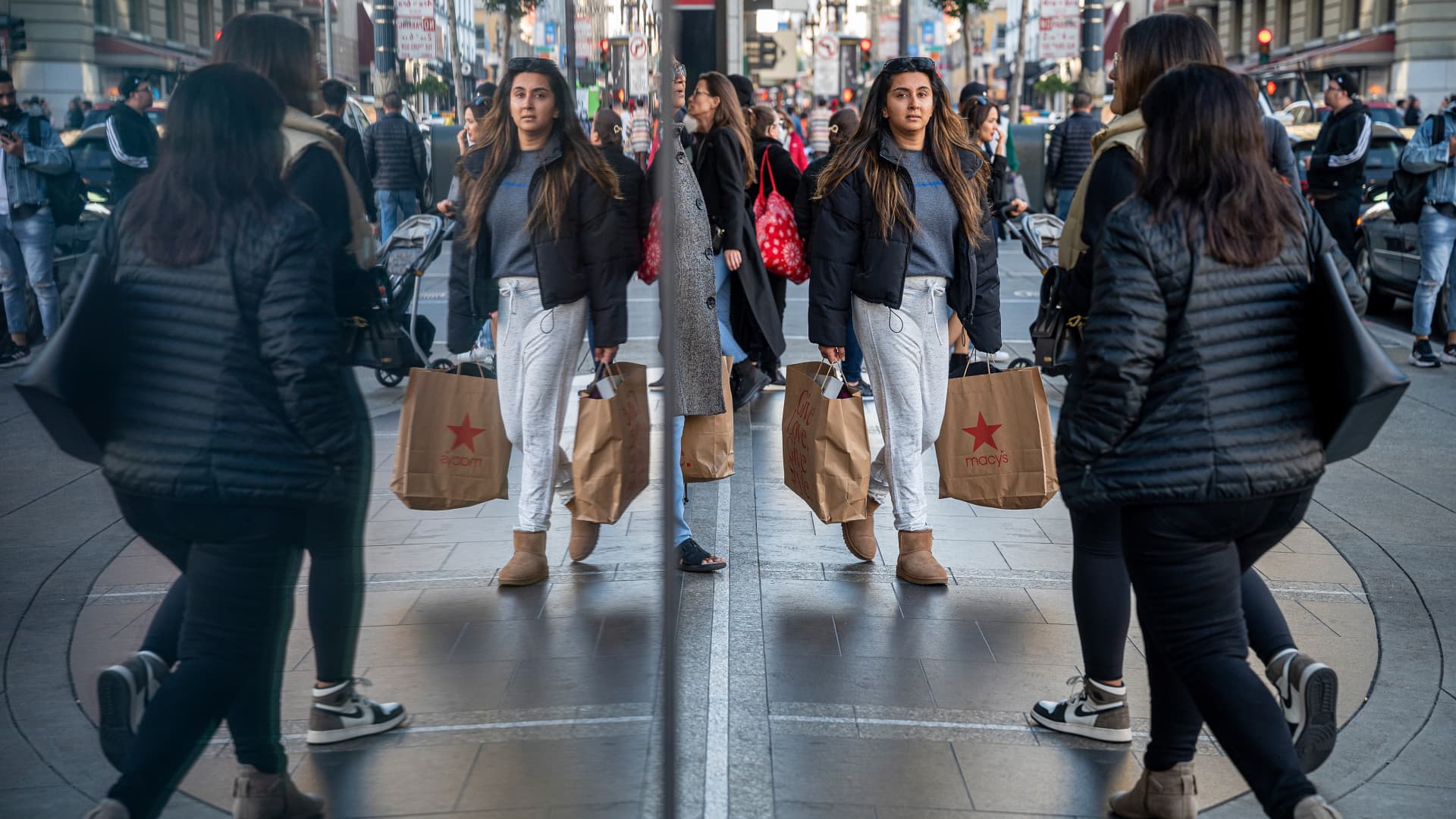Months of high inflation have weighed heavily on households.
As of December, 64% of Americans were living paycheck to paycheck, according to a recent LendingClub report — up from 61% a year earlier and in line with the historic high first hit in March 2020.
For the first time, more than half of all six-figure earners also said they were stretched too thin, a jump from 42% a year ago.
“The effects of inflation are eating into every American’s wallet and as the Fed’s efforts to curb inflation drive up the cost of debt, we are seeing near record numbers of Americans living paycheck to paycheck,” said Anuj Nayar, LendingClub’s financial health officer.
More from Personal Finance:
What is a ‘rolling recession’ and how does it impact you?
Almost half of Americans think we’re already in a recession
If you want higher pay, your chances may be better now
For its part, the Federal Reserve is widely expected to announce its eighth consecutive rate hike at this week’s policy meeting.
Even though wage growth is high by historical standards, it isn’t keeping up with the increased cost of living, which in December was up 6.5% from the prior year.
That leaves many Americans in a bind as inflation and higher prices force more people to dip into their cash reserves or lean on credit just when interest rates rise at the fastest pace in decades.
Other reports also show financial well-being is deteriorating overall.
How to get your budget back on track
Certified financial planner Ted Jenkin, CEO and founder of oXYGen Financial in Atlanta and a member of CNBC’s Financial Advisor Council, offers his best advice for spending less and finding a better return on your savings.
1. Cut spending
Jenkin said some simple financial hacks can help, such as going to the grocery store less and cutting back on online shopping.
“Grocery stores are just like Las Vegas; they are there to separate you from your wallet,” he said. Meal planning is one way to edit down your shopping list to weekly essentials and save money.
Disabling one-click ordering or deleting stored credit card information can also help. “Anyone that shops on Amazon and has a stored credit card, you are basically pouring lighter fluid on your budget,” Jenkin said.
Jenkin recommends waiting 24 hours before making an online purchase and then using a price-tracking browser extension such as CamelCamelCamel or Keepa to find the best price.
Finally, tap a savings tool such as Cently, which automatically applies a coupon code to your online order, and pay with a cash-back card such as the Citi Double Cash Card, which will earn you 2%.
“You really have to get disciplined or you’re going to outspend your income,” he said.
2. Boost savings
The money you put away should also work to your advantage, he said.
Although deposit rates are climbing, even a high-yield savings account won’t pay enough to keep up with the rising cost of living.
Jenkin recommends buying short-term, relatively risk-free Treasury bonds and laddering them to ensure you earn the best rates, a strategy that entails holding bonds to the end of their term.
“It’s not a huge return but you are not going to lose your money,” he said.
Another option is to purchase federal I bonds, which are inflation-protected and nearly risk-free assets.
I bonds are currently paying 6.89% annual interest on new purchases through April, down from the 9.62% yearly rate offered from May through October 2022.
Still, this will work well as a hedge against inflation for long-term savers. The downside is that you can’t redeem I bonds for one year, and you’ll pay the last three months of interest if cashed in before five years.
LendingClub’s paycheck-to-paycheck report is based on a survey of nearly 4,000 U.S. adults in December.
